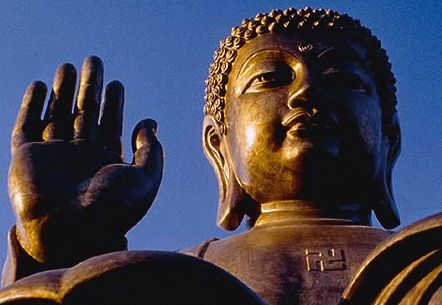(Minghui.org)
Historical Highlights
The swastika is an ancient symbol of good fortune embraced through the ages and around the world. However, many people today have vivid memories of Hitler's abuse of the swastika during World War II, associating it with the horrors of the Holocaust. Hitler misappropriated the swastika, distorting its meaning to millions of people. As a result, they are often surprised to see the swastika as part of the Falun, the symbol of Falun Dafa.
The swastika has long been a powerful and positive symbol in a multitude of cultures spanning the globe. In Eastern cultures, the swastika is a symbol of Buddha. In China, the swastika also embodies the concepts of eternity, infinity and the universe. The Chinese word for the symbol is wan, and in Sanskrit, it is known as srivatsa.
Photos showing some past and present examples of the use of the swastika are presented below, as are links to an eye-opening eleven minute video.
Swastikas as the Symbol of Buddha


Swastikas are commonly found on Buddha statues, large and small, throughout Asia. The massive bronze Buddha statue (above left) on Hong Kong's Lantau Island was completed in 1993 and stands over 100 feet tall (35 meters).

Swastikas adorn the roofline of this Hong Kong Buddhist temple

Swastikas mark the location of Buddhist temples on the Taipei subway map
Swastikas Symbolized Good Fortune in the West before WWII
Most people have forgotten the positive image the swastika had even in North America. Post cards such as the one below recall the days before Hitler and the Holocaust gave this timeless symbol of good fortune a completely different meaning for most people in the Western world.

1907 postcard by E. Phillips, a U.S. card publisher

Arizona State Highway markers all bore the swastika before WWII.
The swastika is widely revered in a large number of Native cultures,
including those of the Navajo and Hopi peoples of Arizona.
Falun Embodies the True Meanings of the Swastika

The Falun emblem - the symbol of Falun Dafa
In the practice of Falun Dafa, the Falun emblem contains both wan symbols and yin-yang symbols (called Taichi symbols in Chinese). Ancient cultivation ways of the Dao school have always considered the yin-yang symbols as miniatures of the universe. Similarly, cultivation ways of the Buddha school consider the swastika to represent the universe.
Looking closely at the galaxies below, you might be able to see for yourself why the ancients thought the swastika and the yin-yang symbols were fitting representations of the cosmos.


Watch the Video: Swastika - Symbol of Buddha
For more insight into the past and present of the swastika, click below to view an eleven minute video produced by FGMTV.
Category: What is Falun?





